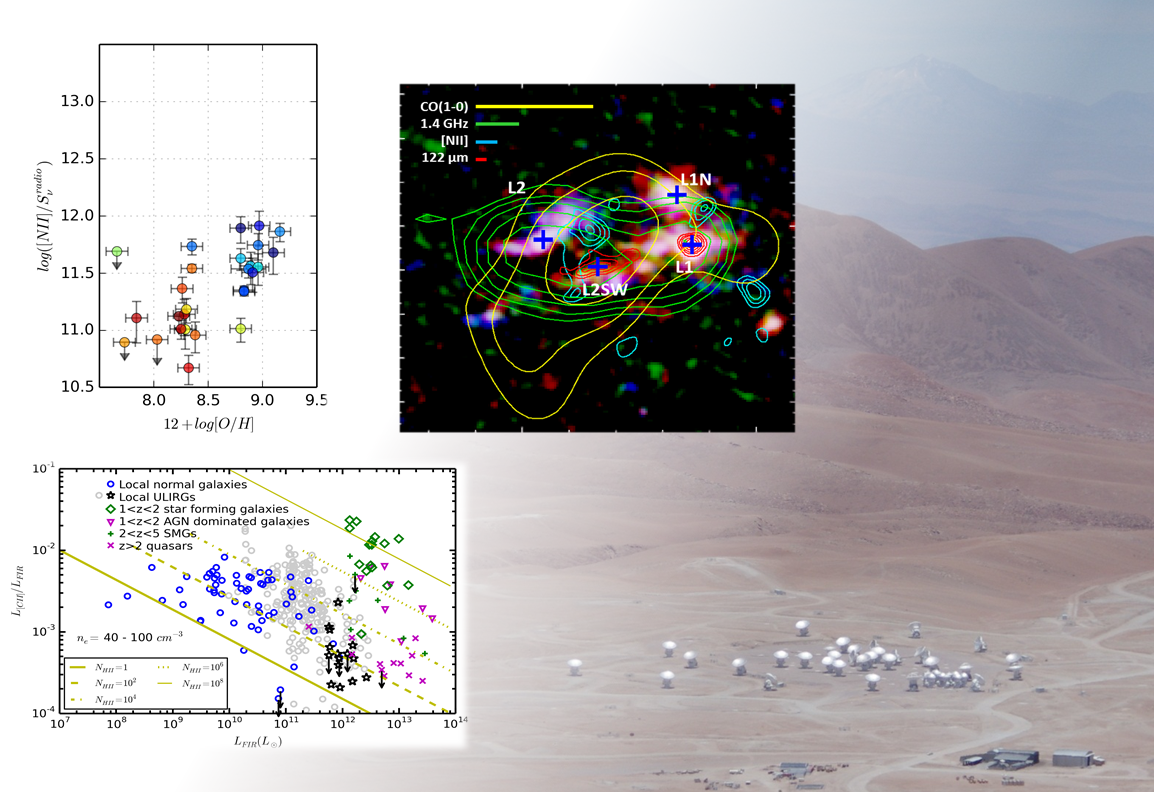Daily Image
08-10-2015Today's Colloquium: Far-infrared fine-structure line studies of early galaxies: Where are we? Where do we need to go?
| Submitter: | Carl Ferkinhoff |
| Description: | This year marks the 40th anniversary of the first far-infrared fine-structure line detection, the [OIII] 88 micron line by the NASA Learjet in 1975. Additional pioneering work through the early 90's revealed the astrophysical importance of the full suite of far-IR lines and demonstrated their power as probes of the physics conditions in the interstellar medium (ISM). While inaccessible from ground at their rest wavelengths, they begin falling into the short submillimeter telluric-windows (~200 to 500 micron) from high-z systems at z~1. Over the past one and half decades ISO, Herschel and now SOFIA have provided detailed studies of the lines in the local universe while ground based observations made the first detections of the lines from the early universe. These first detections in the high-z universe demonstrated the lines' utility for studying high redshift systems. This includes the ability to constrain the size of star-forming regions, quantity of ionized gas, age of the starburst, and gas phase abundances to name a few. Now in the ALMA era, studies using the fine-structure lines have the potential to dramatically increase our understanding of early galaxies, both in their formation and evolution. Much work is required, however, to fully realize this potential. In this talk I will seek to answer two questions in regards to the far-IR fine-structure lines: Where are we and where do we need to go? In answering these questions I will summarize the current state of fine-structure line studies--both locally and in the distant universe--while highlighting some of my recent work with ALMA cycle-0 observations of the [NII] 122 micron line and an explanation the "[CII] deficit". In the last part of the talk I will discuss future multi-wavelength studies, such as radio continuum observations, that will help realize the full scientific potential of the FIR fine-structure lines for studying the early universe. |
| Copyright: | Carl Ferkinhoff |
| Tweet |  |
